Abstract
Epidemiologic data suggest that elderly adults are more susceptible to invasive bacterial infection by indigenous gut flora than are younger adults. The purpose of this investigation was to characterize a murine model of clinically encountered peritonitis in the aged. We subjected three different age groups (young, 16 weeks; mature, 12 months; senescent, 24 months) of C57BL/6NNia mice to surgically induced peritonitis by the cecal ligation and puncture procedure. Senescent mice died in a significantly shorter time following surgery than mature mice (median time to death, 24.4 versus 38.5 h, respectively; P less than or equal to 0.001). Blood, liver, spleen and occasionally, ceca were obtained at 2 and 12 h after the cecal ligation and puncture procedure and immediately following death, to characterize the bacterial kinetics of the model. Qualitative and quantitative aerobic, anaerobic, and coliform cultures were performed. No age-related differences were found in the types of bacteria isolated throughout the time course of progressive sepsis. In mice in the mature and senescent age groups, at 2 and 12 h postsurgery, gram-negative anaerobes and gram-positive aerobes predominated in all tissues that were cultured. At the time of death, however, blood and tissue isolates consisted predominantly of coliform bacteria. The shift from mixed infection during sepsis to predominantly gram-negative bacterial infection reflected a similar progressive shift in bacterial types found in the cecum. At death, senescent mice had 100-fold fewer coliform bacteria in the bloodstream than those found in mature mice (2.5 x 10(9) versus 4.6 x 10(11), respectively). The increased sensitivity of aged mice to invasive bacterial infection documented in this series of experiments accords well with human epidemiologic experience and demonstrates the appropriateness of the model for continued investigations of sepsis in the aged.
Full text
PDF
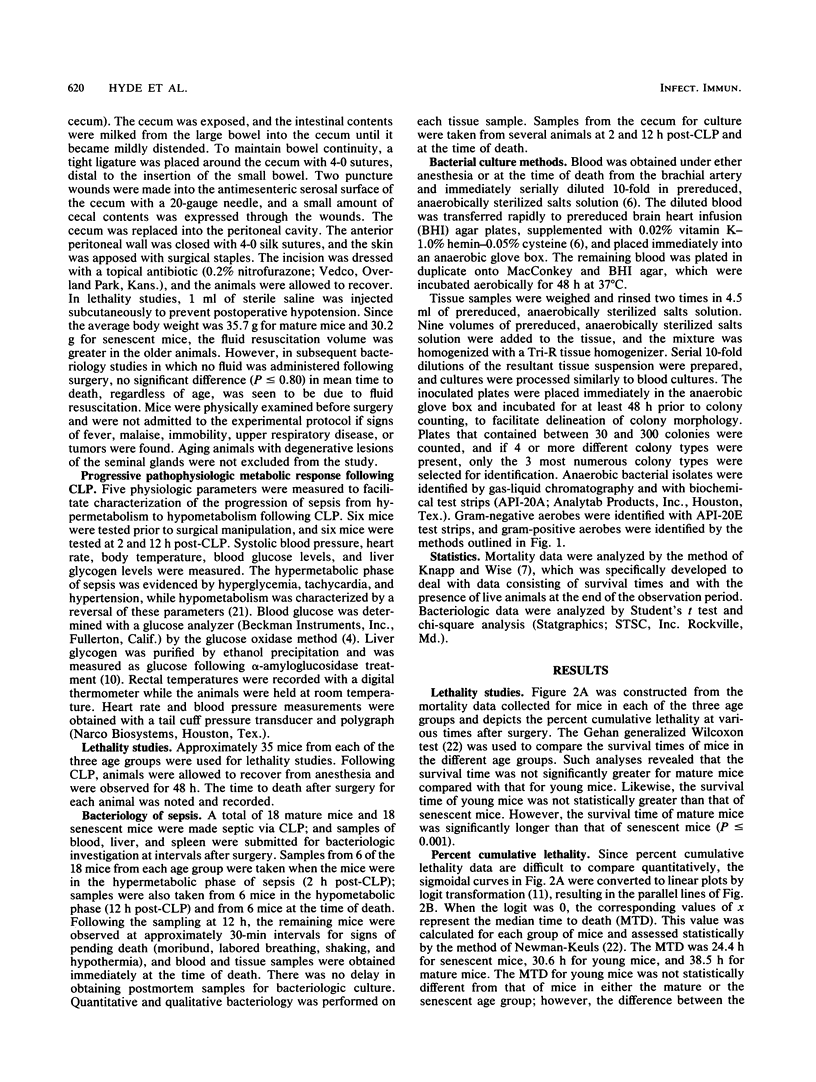
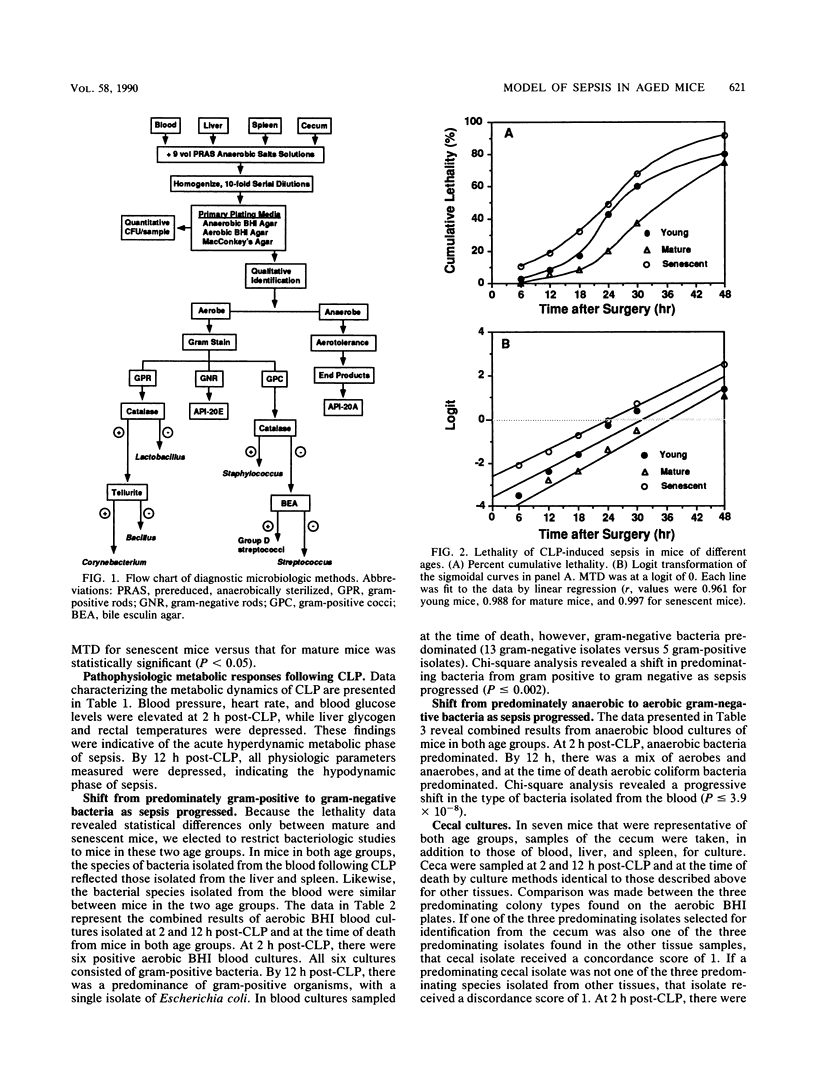
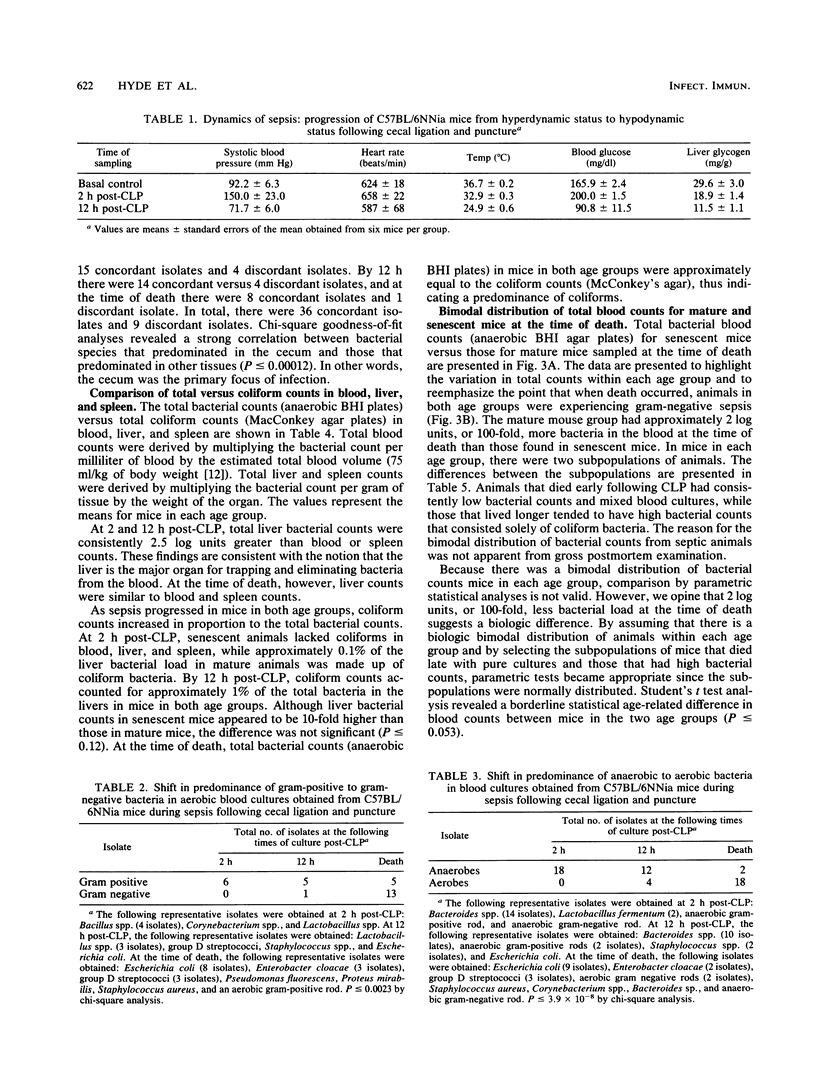
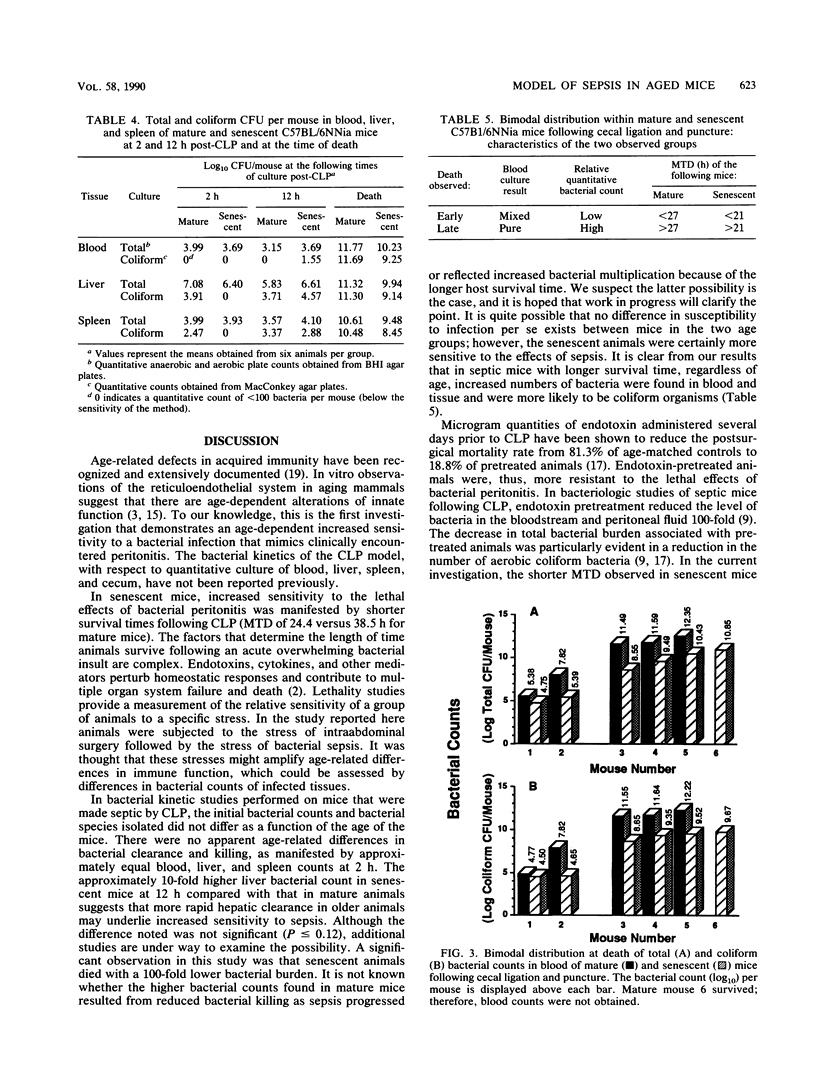
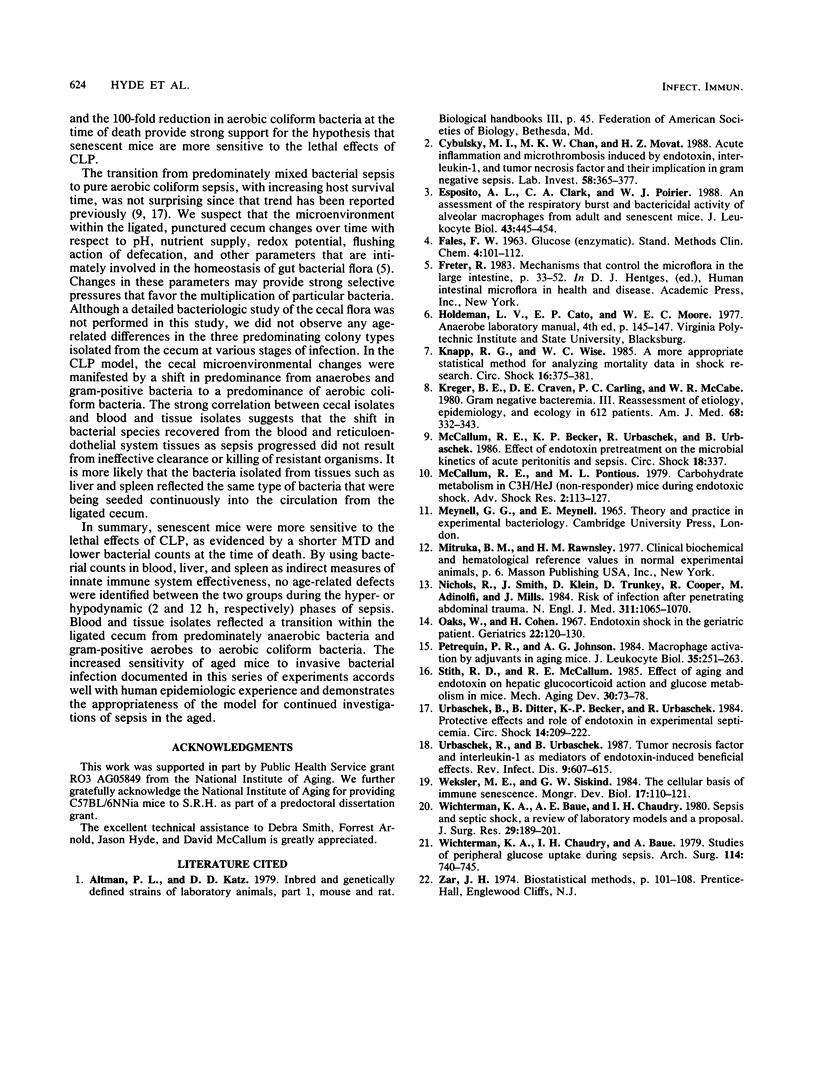
Selected References
These references are in PubMed. This may not be the complete list of references from this article.
- Cybulsky M. I., Chan M. K., Movat H. Z. Acute inflammation and microthrombosis induced by endotoxin, interleukin-1, and tumor necrosis factor and their implication in gram-negative infection. Lab Invest. 1988 Apr;58(4):365–378. [PubMed] [Google Scholar]
- Esposito A. L., Clark C. A., Poirier W. J. An assessment of the respiratory burst and bactericidal activity of alveolar macrophages from adult and senescent mice. J Leukoc Biol. 1988 May;43(5):445–454. doi: 10.1002/jlb.43.5.445. [DOI] [PubMed] [Google Scholar]
- Knapp R. G., Wise W. C. A more appropriate statistical method for analyzing mortality data in shock research. Circ Shock. 1985;16(4):375–381. [PubMed] [Google Scholar]
- Kreger B. E., Craven D. E., Carling P. C., McCabe W. R. Gram-negative bacteremia. III. Reassessment of etiology, epidemiology and ecology in 612 patients. Am J Med. 1980 Mar;68(3):332–343. doi: 10.1016/0002-9343(80)90101-1. [DOI] [PubMed] [Google Scholar]
- McCallum R. E., Pontious M. L. Carbohydrate metabolism in C3H/HeJ (nonresponder) mice during endotoxic shock. Adv Shock Res. 1979;2:113–127. [PubMed] [Google Scholar]
- Nichols R. L., Smith J. W., Klein D. B., Trunkey D. D., Cooper R. H., Adinolfi M. F., Mills J. Risk of infection after penetrating abdominal trauma. N Engl J Med. 1984 Oct 25;311(17):1065–1070. doi: 10.1056/NEJM198410253111701. [DOI] [PubMed] [Google Scholar]
- Oaks W. W., Cohen H. E. Endotoxin shock in the geriatric patient. Geriatrics. 1967 Mar;22(3):120–130. [PubMed] [Google Scholar]
- Petrequin P. R., Johnson A. G. Macrophage activation by adjuvants in aging mice. J Leukoc Biol. 1984 Mar;35(3):251–263. doi: 10.1002/jlb.35.3.251. [DOI] [PubMed] [Google Scholar]
- Stith R. D., McCallum R. E. Effects of aging and endotoxin on hepatic glucocorticoid action and glucose metabolism in mice. Mech Ageing Dev. 1985 Apr;30(1):73–78. doi: 10.1016/0047-6374(85)90060-0. [DOI] [PubMed] [Google Scholar]
- Urbaschek B., Ditter B., Becker K. P., Urbaschek R. Protective effects and role of endotoxin in experimental septicemia. Circ Shock. 1984;14(4):209–222. [PubMed] [Google Scholar]
- Weksler M. E., Siskind G. W. The cellular basis of immune senescence. Monogr Dev Biol. 1984;17:110–121. [PubMed] [Google Scholar]
- Wichterman K. A., Baue A. E., Chaudry I. H. Sepsis and septic shock--a review of laboratory models and a proposal. J Surg Res. 1980 Aug;29(2):189–201. doi: 10.1016/0022-4804(80)90037-2. [DOI] [PubMed] [Google Scholar]
- Wichterman K. A., Chaudry I. H., Baue A. E. Studies of peripheral glucose uptake during sepsis. Arch Surg. 1979 Jun;114(6):740–745. doi: 10.1001/archsurg.1979.01370300094020. [DOI] [PubMed] [Google Scholar]


